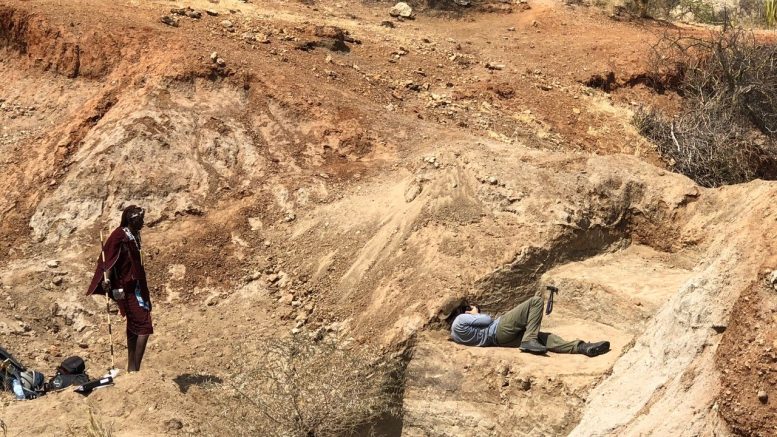A study published in Communications Earth & Environment suggests that Homo erectus adapted to extreme desert conditions as early as 1.2 million years ago. Researchers found that early humans repeatedly returned to specific water sources for thousands of years and developed specialized tools to survive in harsh environments.
Homo erectus is the oldest human ancestor to have body proportions like modern humans, with long legs and shorter arms relative to the torso.
Paul Durkin is an assistant professor of sedimentology in the U of M’s Clayton H. Riddell faculty of environment, earth and resources.
Durkin began his academic journey with an undergraduate degree in geology focusing on rock formations that contain oil and gas. His passion led him further to pursue a graduate degree in geosciences from the University of Calgary.
“My area of research in geology is specifically in sedimentology,” he said.
“I branched off from there to work in other areas, not just oil and gas. I’m doing work in rivers, and river sediment, how they move sediment across the surface of the earth and also looking at the rock record of those environments. Both in Alberta and then this work that I’m doing in East Africa.”
During his PhD, Durkin focused on the study of river deposits in both modern and ancient environments. His research explored the evolution of present-day rivers, such as the Mississippi River, analyzing how they shift and change course over time.
Additionally, he examined river systems dating back to a hundred million years, using the rock record to gain insight into the earth’s surface conditions during that period.
“My research program still focuses a lot on river environments, all the way from present day to the ancient record on modern day rivers,” he explained.
“I study the effects of the 2011 [Assiniboine River] flood that happened, how the river course might have changed and why.
“We look at how and why rivers grow, where they do, whether they’re migrating quickly or migrating slowly and what controls that process.”
Durkin conducts research in Alberta’s Dinosaur Provincial Park, where he reconstructs ancient environments to better understand the conditions in which dinosaur fossils were formed. His work explores natural processes that shaped rivers over timescales far beyond human history.
Durkin collaborates on archaeological research in East Africa, where he helps determine the age of discoveries and reconstructs ancient environments. His work provides crucial geological context, helping archaeologists understand the history of the site and its surroundings.
“In the 1960s, the fairly well-known archaeologists Mary and Louis Leakey were working in Tanzania at this site, and they uncovered fossil material from a now extinct species of our genus — Homo erectus,” he said.
“We were able to revisit that site, starting in 2017, and with the archaeologists and myself and a group of students, we did some excavations there and we uncovered and contextualized those fossils. We were able to demonstrate that Homo erectus was present there, the types of tools they were making, where they were living, what the environment was like.”
In Homo erectus’s time, sediment layers showed that the climate was changing, becoming more arid and challenging to live in. Durkin’s research proved that Homo erectus navigated these difficult environments as it was initially thought that only Homo sapiens had the capability to do so.
“But Homo erectus was able to adapt [to climate change], and that behaviour happened […] just over a million years ago,” Durkin said.
By studying sedimentary layers, geologists reconstruct past environments and provide crucial age constraints.
“This project, that I’ve been a part of, it’s led by the University of Calgary, the archaeology professor there. I’ve been a member of the project for six years. And another aspect to it is trying to promote the local involvement,” he said. “We do not just go in, take samples and leave and come back to North America,” he said. “We do incorporate the locals and train them and try to expand their capacity for doing this research in their home country on their materials that are present there.
Durkin also highlighted that professor Alfredo Camacho is a co-author of the study from the U of M’s Clayton H. Riddell faculty of environment, earth and resources. His lab contributes by conducting the age dating of the sediment.
Durkin remains proud of their commitment to responsible research.
“We try to really not do the colonial approach to the research. That was the approach in the past, […] that’s something we’re proud of and want to continue doing.”


